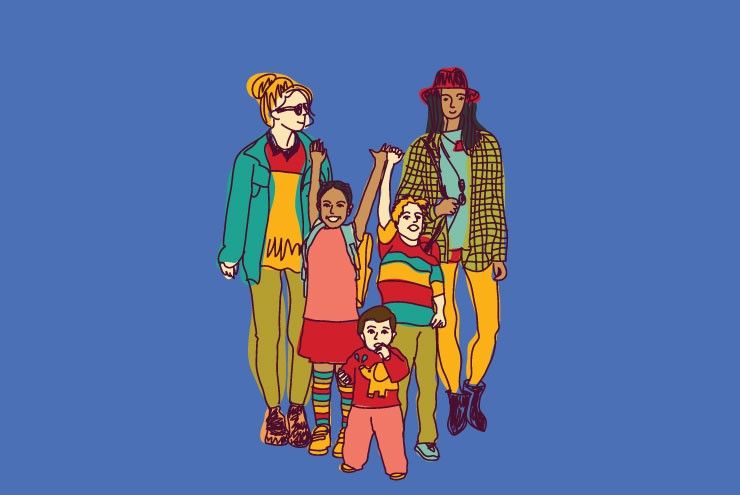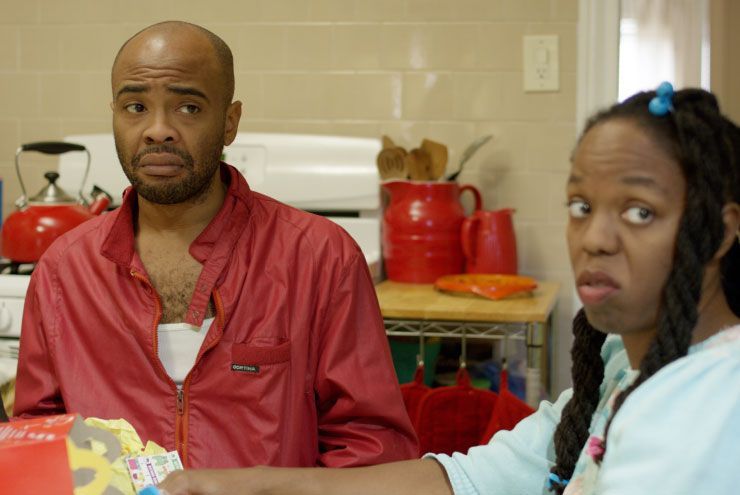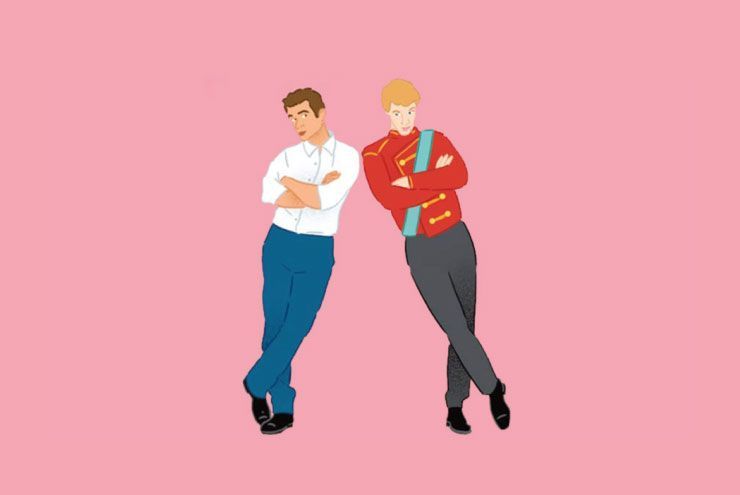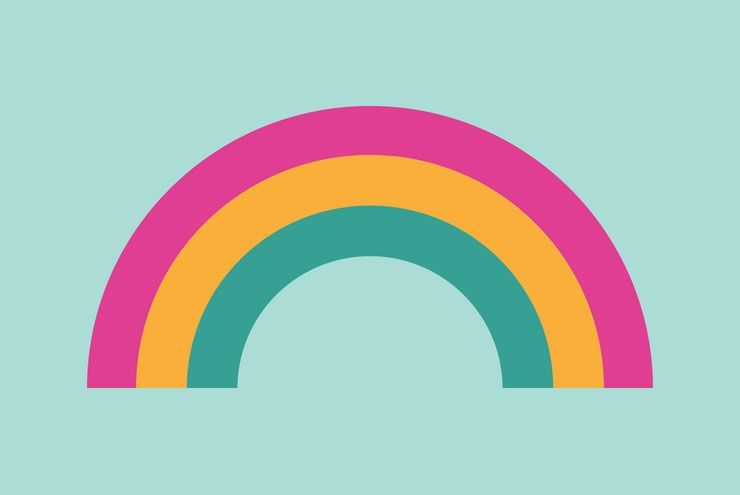By Laura McGuire
You always remember your firsts—your first kiss, your first time traveling alone, your first place of your own. When you have children you care for—either as a parent or family member—their firsts become yours too. First teeth, steps, and trips to favorite places are seen through both their eyes and your own. You relish in both experiences and your memories become a shared milestone engraved into two minds. For many queer folks, their first Pride celebration is one of these unique “firsts” in our lives. Hetero counterparts will never know the thrill, anxiety, and anticipation of showing up to a Pride celebration as either a closeted spectator or an enthused virginal participant. These experiences shape us, help us to see that we are part of a community, and allow us to find self-love in a society that often wants us to be extinct or invisible.
For many queer parents (by “parents,” I am referring to anyone who is a cornerstone in a child’s life), Pride is something we look forward to sharing with our children and the next generation. After all, we pick out first birthday, Christmas, and Thanksgiving outfits for our kiddos, excited to share our favorite holidays with the little humans we love the most. So why would Pride season be any different? The issue that often arises is that not all Pride celebrations are family friendly, and many people aren’t sure of how to integrate their kids into the festivities.
As a child, I was terrified of Pride—utterly and completely terrified. I even shed away from rainbow stickers in my coloring book, petrified it would signal me as gay. My family was very open and vocal about their belief in the inherent evils of LGBTQ people, so I knew I was to avoid my true community at all costs. As a teen, I became more rebellious and began to look at Pride celebrations with admiration and curiosity. I was fully aware that I was gay, but thought that I could “deal” with it by praying and forcing myself to date men. I married a man as my ultimate bearded move, and got two amazing children as souvenirs from the experience. When we were dating/engaged, I openly identified as bisexual, but told him I was the, “kind of bisexual who isn’t attracted to men at all.” I was 19—give me a break, ok? The upside of this was that he always supported the fact that I wasn’t straight. When I got pregnant, we even discussed being open with our children about the range of identities that exist within the LGBTQ spectrum.
After my divorce, however, I knew it was time to live openly and authentically. My children had already been exposed to a variety of “nontraditional” couples and families—and understood that they could love and marry someone of any gender—so the news of my queer identity did not faze them at all.
My first year living fully out, a small town a few miles away held a Pride festival hosted by our church. I heard the event was very family friendly and—not having any other queer friends yet—thought it would be the perfect opportunity to bring my kids.
The overall experience was a perfect introduction to Pride. While there wasn’t a parade, there were plenty of local artisans, booths, and even a playground with a sea creature touch tank right next door. All seemed to be going uneventfully until my five-year-old son spied a big bowl of condoms from the local health center on our way out of the festival. With nothing but pure glee in his eyes he yelled out, “Candy!,” and proceeded to lunge for a handful. With my mommy-fast reflexes, I both redirected and informed him that those brightly-colored, bite-sized packages were not actually candy. When his inquisitive young mind asked for an explanation, I quickly replied that they were similar to medicine—they prevent you from getting sick or getting anyone else sick. I mean, that is what they do! He readily accepted this logic and the need for a longer explanation was avoided. We ended our first Pride as a family, happy and covered in new rainbow gear.
Bringing little people and teens to Pride isn’t always easy. While not all Pride celebrations are family friendly, as more queer families come forward and more children come out as LGBTQ, more festivals and parades are making their events inclusive of all ages. If you choose to bring your kids, remember to plan ahead. I suggest bringing snacks, drinks, and keeping your visit to a realistic length for your children. Plus, planning your trip around a specific event—such as the parade—helps things go much smoother. Above all, let us remember why we celebrate Pride in the first place. I often say Pride is like Christmas—people forget the reason for the season. Pride is about activism, community, and celebrating who we were born to be. And that, my friends, is ageless.







